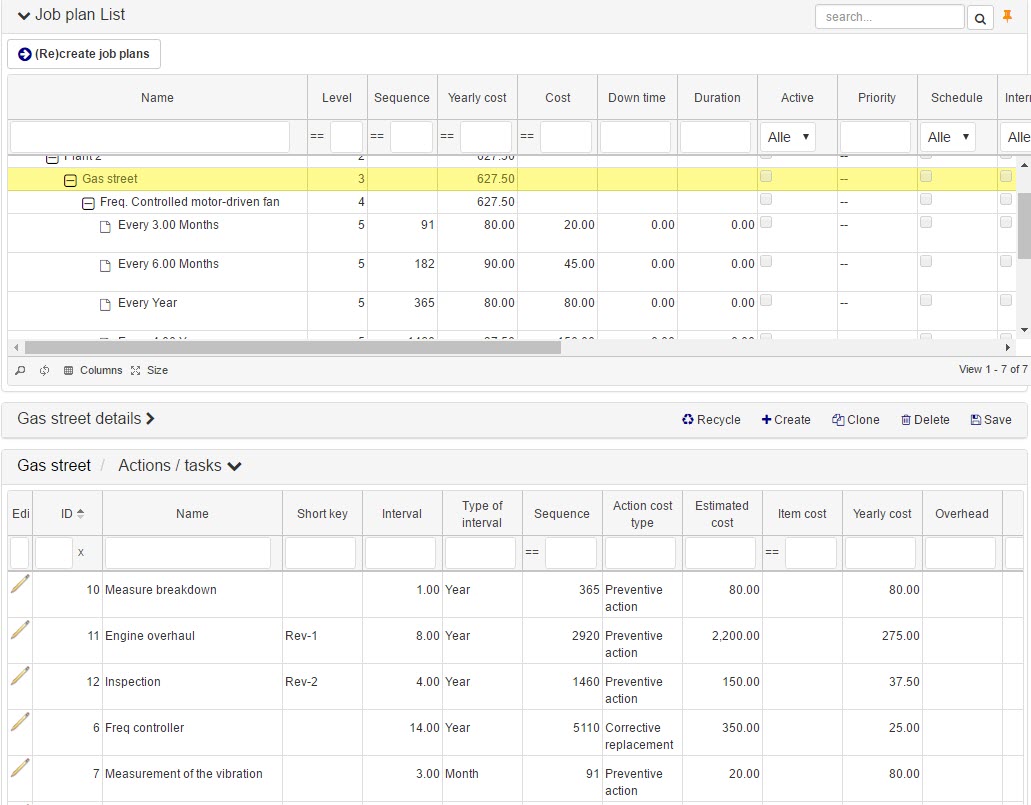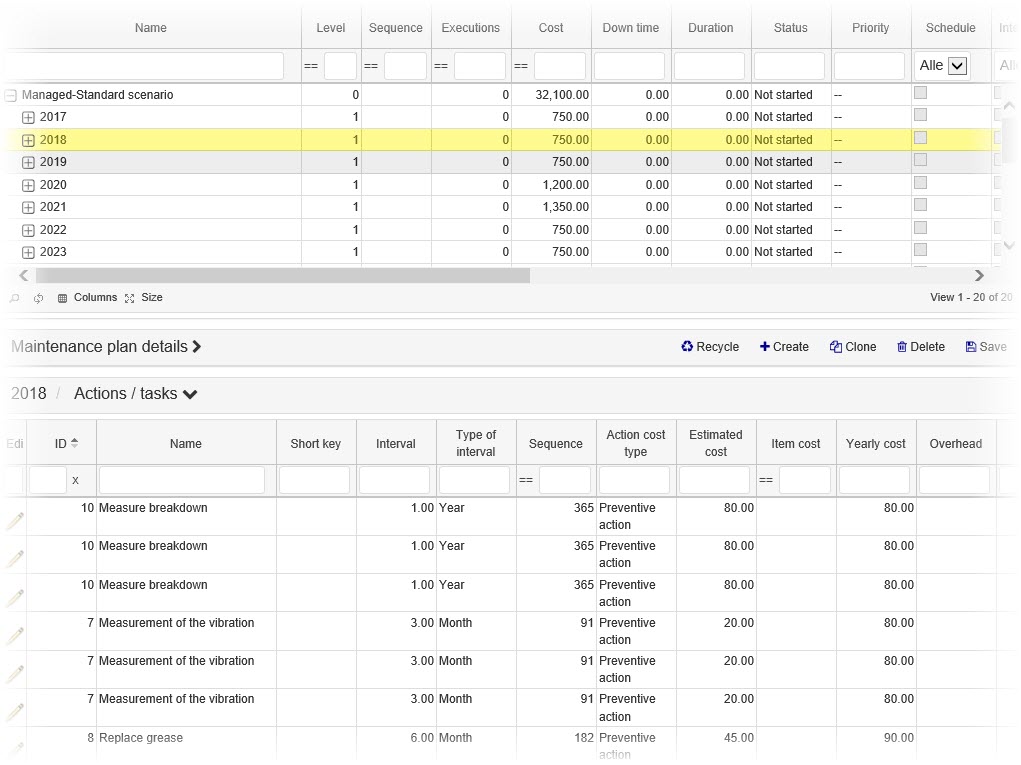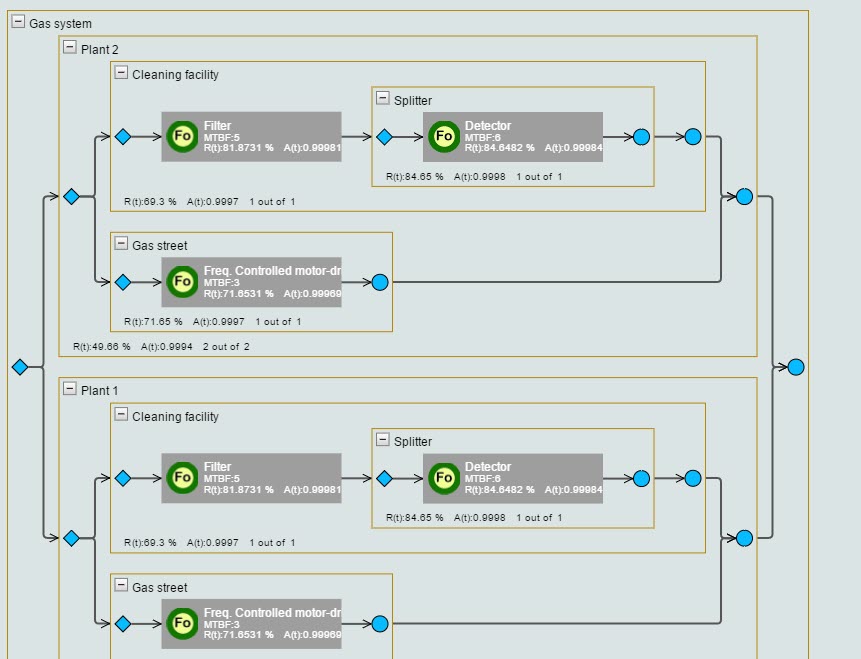
Functionalities
Overview of the functionalities of Clarify
General

Administrators can add users and can create and copy databases.
Administrators can assign access rights to users.
A large number of database models (risk registers) tailored to the branch and problems are available in the library.
Library with all possible data to copy different components such as Fmeca matrices, tasks and measures and functional object structures.
Suitable for tablets. The pages are created with the aim to function properly on a tablet.
Multilingual Clarify is available in both English and Dutch.
Possibility to translate risk registers in German, English, French, Spanish and Dutch.
Clarify is responsive. In other words, the format is adjusted to the size of the screen.
Support security through 2-factor authentication using an authenticator application.
 The Clarify application
The Clarify application

Support of both risk management and asset management.
A central dashboard, from where you can work with a clear overview of your data.
The dashboard can be constructed to your own preferences and can be visualised both vertically, horizontally and as a dynamic view.
The dashboard consists of multiple layers and has a hierarchical structure.
FMECA risk/asset analysis

FMECA asset analysis RCM, HAZOP, ECO.
FMECA risk analysis on processes.
Ensured maximum permissible effects and risks (risk management).
The failure behavior of a risk can be modeled.
A flexible risk matrix optimal adjustable based on business needs.
Multiple stages with measures and the associated risk.
First order and second order effects.
Optimization.
For every stage, the colour selection and calculation method can be adjusted.
The preventive measures can be copied from a library.
Simple connection to one or more functional objects.
A graph of the life cycle costs.
Direct coupling to RAMS to determine the reliability and availability.
Lifecycle costs

The lifecycle costs are calculated based on the risk costs and the costs of the preventive measurements.
The specification of the lifecycle costs is based on a self-chosen state of the costs which matches the busisness operations. This provides maximum insight into the structure of the costs and benefits.
It is possible to add costs (OPEX and CAPEX) and benefits to these specifications.
Think of fuel, procurement, training, etc.!
Costs can be assigned to Functional objects.
Calculation on functional and technical level.
Comparison of multiple scenarios, such as extension of Life cycle or early replacement.
Good report of life cycle costs, both in graph and as a table.
Job plans

The Job plans are composed based on the preventive measures.
Flexible method to create the concepts.
Multiple levels.
The Job plan is presented clearly.
Good export possibilities.
Supporting the optimization process based on defined KPIs.
Multiannual maintenance plan

A long-term maintenance plan is composed of a job plan combined with an Asset.
The long-term maintenance is presented clearly.
Composition of Maintenance plans for prolonged periods (more then 50 years).
The benefits of risk based maintenance are made visible in comparison to budget based maintenance.
Adjustment of priority based on Multi Criteria analysis.
RAMS diagrams

RAMS diagrams are being used for the calculation of reliability, availability and security
By Bill redundant circuits.!
Determination of objects which are most susceptible to interferences.
Automatic composition of the RAMS diagram from the functional object structure.
Automatic composition of the RAMS diagram from Assets.
High degree of flexibility.
By (unlimited) use of multiple layers, complicated installations can easily be unraveled.
Good export possibilities.
Also read